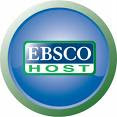The United States’ health care system is in crisis and in need of reform. A majority of politicians on either side of the aisle would in fact agree on this. Agreeing on how to reform the complex system is another matter entirely and is the fodder for debate both in Congress and in the media. Presently, there are several health care reform bills at various stages in the committee process. Any one of these pieces of legislation would make for an interesting note topic or seminar paper topic.
For a law student researching health care reform, it is important to understand the underlying policy arguments behind the proposed legislation and the historical context within which the legislation fits. Listed below is a selected bibliography of some resources the library has on the subject of health care law and policy.
Current Awareness Resources:
BNA’s Health Care Daily Report: Available online through the library’s electronic resources page.
BNA is a leading provider for quality non partisan news on business and government. BNA’s Health Care Daily Report is, as the name would suggest, a daily news service on the topic of health care. For researchers interested in health care reform, one useful feature of this report is a chart, created by the BNA’s editors, called “Hill Watch: the Status of Major Health Care Legislation.”
Inside Health Reform: To go directly into this database, access it through SARA, the library’s online catalog.
Available on Lexis, Inside Health Reform is a weekly publication that delivers news on the national health care reform debate.
Books and Treatises:
Health Policy: Crisis and Reform in the U.S. Health Care Delivery System (Charlene Harrington & Carroll Estes, eds., 4th ed., 2004).
Topics covered in this title include: access to health care, the economics of health care, private insurance and managed care, reforming the U.S. health care system and the international health system.
Medical Malpractice and the U.S. Health Care System (William Mm. Sage & Rogan Kersh, eds., 2006).
Topics covered include: malpractice reform as a health policy problem, the effects of the U.S. malpractice system on the cost and quality of care, liability, patient safety, and defensive medicine, and caps and the construction of damages in medical malpractice cases.
Julius B. Richmond & Rashi Fein, The Health Care Mess: How We Got into It and What It Will Take to Get Out (2005).
This title examines the history of the United States health care system from 1900-2005. It examines the competing forces that shaped our current system and also discusses the system’s future.
Journals and Scholarly Publications:
Health Affairs: Available online through the library’s electronic resources page.
Health Affairs is a peer-reviewed bi-monthly journal. The journal’s primary focus is on domestic health care, but international developments are covered as well.
Journal of Health Politics, Policy and Law: To view the most recent issue, access the title through SARA, the library’s online catalog.
The Journal of Health Politics, Policy and Law is an interdisciplinary journal which focuses on the initiation, formulation, and implementation of health policy and analyzes the relations between government and health–past, present, and future.
Medical Law Review: Available online through the library’s electronic resources page.
The Medical Law Review publishes articles of international interest. In addition it carries two commentary sections. The first concentrates on UK law and includes case reports and legislation summaries followed by analytical interpretation. The second section concentrates on recent medical-legal developments in the USA, the Commonwealth, and Europe.
Databases and Online Resources:
Health Care Policy Tracking Service: Available online through the library’s electronic resources page.
This database serves as a gateway to tracking and finding bipartisan analysis of major health policy and legislation.
For additional materials available at Brooklyn Law School, search SARA using the subject field for “medical care united states” or “medical policy united states”.

 The Brooklyn Law School Library’s collection has several items on hate crimes laws including
The Brooklyn Law School Library’s collection has several items on hate crimes laws including  See also
See also  See also
See also 

